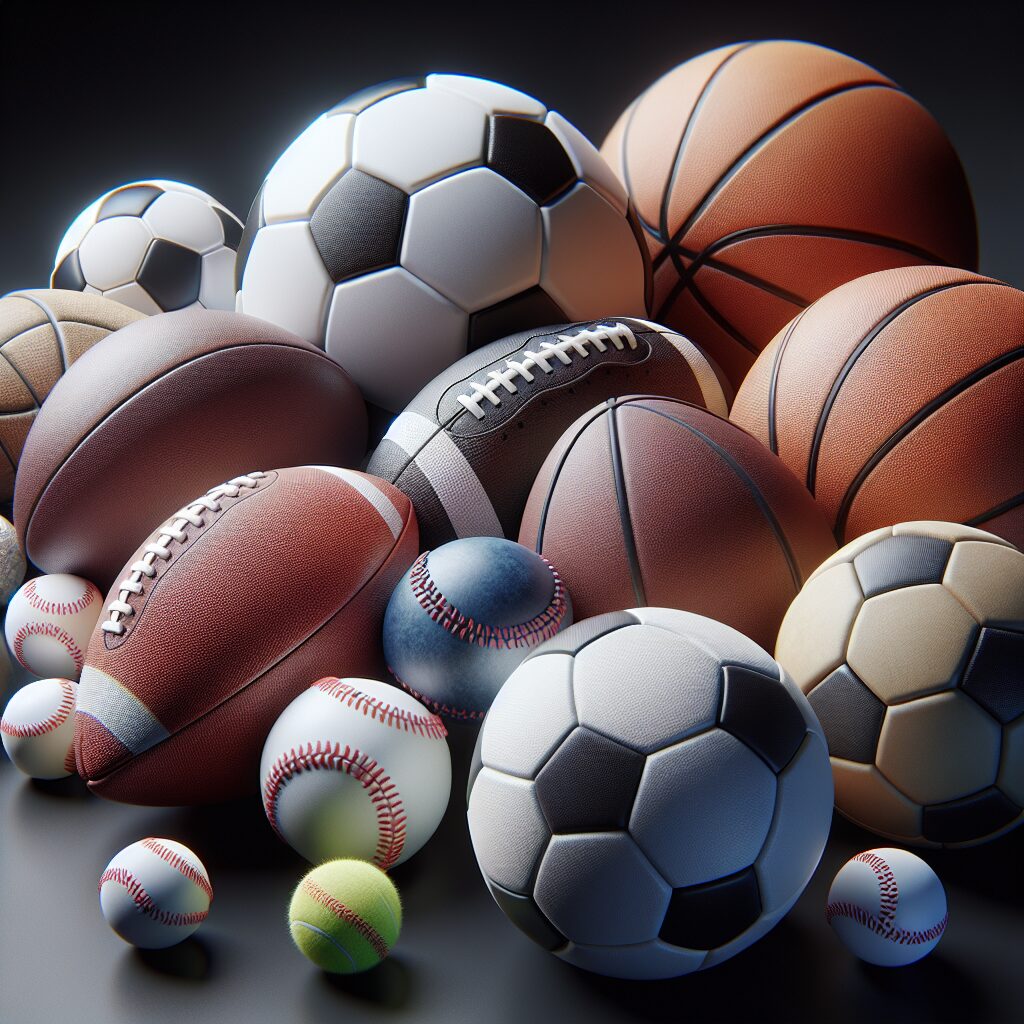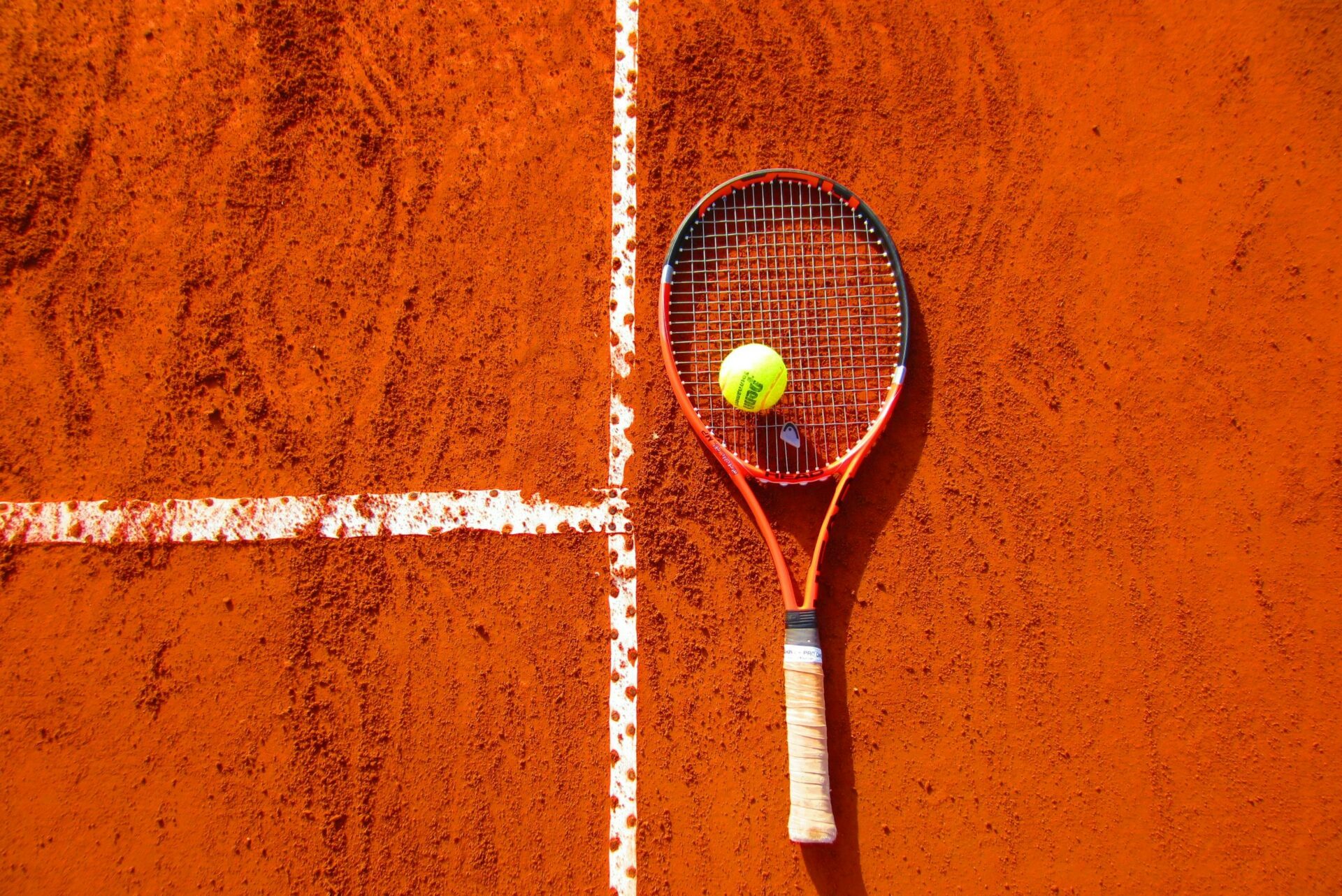Sports balls are an essential part of any game, playing a crucial role in determining the dynamics and excitement on the field. From the roaring applause as a soccer ball finds the back of the net to the crack of a baseball against a bat, the types of sports balls used in different games play a significant role in the overall experience for both players and spectators alike. Our comprehensive guide aims to explore the various types of sports balls, diving into their unique features, impacts, and the key takeaways that readers can expect to learn.
Firstly, it is important to understand that each sports ball is designed with a specific purpose in mind. For instance, a soccer ball is spherical in shape, allowing players to easily control and kick it across the field. The material used to make a soccer ball also affects its performance, with models featuring both stitched panels and thermally bonded panels for enhanced durability and control. Similarly, a basketball features a rubber surface, providing players with a better grip and bounce. Understanding the unique features and specifications of different sports balls can enhance a player’s performance and enable them to make the most out of their chosen game.
Moving forward, our article will delve into the specific impacts and dynamics that various types of sports balls have on the game. We will explore how the size, shape, and material of a ball influence the way it is played, providing readers with valuable insights into the sport they love. Additionally, we will discuss the importance of maintaining and caring for sports balls to ensure their longevity and optimal performance. By the end of this comprehensive guide, readers will have gained a deeper understanding of the different sports balls available, empowering them to make informed choices and excel in their respective games.
Key Takeaways
1. Different sports require different types of balls. Each sport has its own specific ball design and characteristics to optimize performance and gameplay.
2. The construction materials used for sports balls vary based on the sport. From leather to synthetic materials, the choice of ball material affects its durability, bounce, grip, and overall performance.
3. Understanding the differences in ball sizes is crucial. Balls come in various sizes, ranging from small to large, depending on the sport and age group. Using the correct size ball not only ensures fair gameplay but also minimizes the risk of injuries.
4. The design features of sports balls impact their flight and control. Factors such as the number of panels, dimples, and surface texture affect the ball’s aerodynamics. These design elements can influence the ball’s stability, trajectory, and performance in different weather conditions.
5. Proper ball maintenance and storage are important for longevity. Regular cleaning, inflation, and storage in appropriate conditions help maintain the ball’s performance and prevent deterioration. Understanding the specific care requirements for each type of sports ball can extend its lifespan and ensure optimal play.
What are the Different Types of Sports Balls? A Comprehensive Guide
Basketballs
Basketballs are primarily used in the sport of basketball. They are round in shape and are typically made of synthetic leather or rubber. The size, weight, and material of basketballs may vary depending on the type of game being played. Professional basketballs used in official games meet specific standards set by organizations such as the NBA.
Footballs
Football, also known as soccer in some countries, uses a different type of ball called a football. These balls are made of leather or synthetic materials and have a unique pattern called pentagons and hexagons, giving them a distinct appearance. Footballs come in various sizes suitable for different age groups and levels of play.
Tennis Balls
Tennis balls are designed specifically for the game of tennis. They are small, spherical balls made of rubber covered in a fuzzy felt material. Tennis balls are pressurized, which allows them to have a good bounce. Different types of tennis balls are used for different court surfaces, such as clay or grass.
Golf Balls
Golf balls are used in the sport of golf. They are small, hard spheres with dimpled surfaces. The dimples on golf balls are designed to reduce air resistance and increase lift, allowing for longer distances and better control. Golf balls are typically made of materials such as Surlyn or urethane.
Volleyballs
Volleyballs are primarily used in the sport of volleyball. They are made of synthetic leather or composite materials and have a soft touch. Volleyballs are usually larger and lighter than basketballs, allowing for easier handling and hitting. They are also designed to have good flight stability to enhance gameplay.
Baseballs and Softballs
Baseballs and softballs are used in the respective sports of baseball and softball. Baseballs are made of cork, rubber, and yarn, covered with leather. They are small and hard, designed for hitting and throwing accuracy. Softballs, on the other hand, are larger and softer, allowing for safer gameplay.
Other Types of Sports Balls:
In addition to the above-mentioned sports balls, there are many other types used in various sports and recreational activities:
- Cricket Balls: Used in the sport of cricket, these balls are hard and made of cork, covered with leather.
- Rugby Balls: Rugby balls are distinctive due to their elliptical shape and are made of synthetic materials.
- Table Tennis Balls: These small and lightweight balls are made of celluloid or plastic and are used in the sport of table tennis.
- Soft Foam Balls: Soft foam balls are commonly used for recreational purposes or in children’s sports activities due to their softness and safety features.
Guides to Choose the Right Sports Ball:
- Consider the sport: Each sport requires a specific type of ball, so first, determine the sport you’ll be playing.
- Check the size and weight: Depending on your age, skill level, and the sport’s regulations, choose a ball with the appropriate size and weight.
- Understand the material: Different materials offer different performance and durability, so research and choose the right material for your needs.
- Consider the playing surface: Some balls are designed for specific playing surfaces, such as grass, clay, or indoor courts, so ensure you select the appropriate ball for your intended playing environment.
- Quality and brand: Opt for reputable brands known for producing high-quality sports balls to ensure better performance and longevity.
Frequently Asked Questions
What is the purpose of Exploring Types of Sports Balls: A Comprehensive Guide?
The purpose of this guide is to provide readers with a comprehensive overview of different types of sports balls. It aims to help individuals understand the various characteristics, uses, and rules associated with different sports balls.
How can this guide be helpful for sports enthusiasts?
This guide will be immensely beneficial for sports enthusiasts as it offers valuable insights into the different types of sports balls used in various games. By understanding the unique properties of each type of ball, enthusiasts can enhance their knowledge of the game and make informed decisions when it comes to purchasing and using sports balls.
Are the rules mentioned in the guide applicable to all sports?
No, the rules mentioned in this guide are specific to the respective sports mentioned. Different sports have their own set of rules and regulations. It is essential to refer to the official rules of the particular sport in question for accurate and up-to-date information.
Do the characteristics of sports balls vary based on their materials?
Yes, the characteristics of sports balls do vary based on the materials used in their construction. For example, soccer balls made of synthetic leather have different flight and bounce characteristics compared to those made of natural leather. It is important to consider the material when choosing a sports ball for optimal performance.
Can the same ball be used for multiple sports?
While some balls may be versatile enough to be used for multiple sports, it is generally recommended to use a ball specifically designed for a particular sport. Each sport has different requirements and using the appropriate ball ensures fair play and optimal performance.
What are the key factors to consider when purchasing a sports ball?
When purchasing a sports ball, it is important to consider factors such as the intended sport, the material of the ball, size, weight, and the playing surface. These factors greatly impact the overall performance and durability of the ball, so it’s crucial to choose the right one for the best playing experience.
How can I take care of my sports ball to ensure its longevity?
To ensure the longevity of your sports ball, it is important to store it in a cool and dry place when not in use. Avoid exposure to extreme temperatures, sharp objects, and excessive moisture. Regularly clean the ball using mild soap and water, and avoid using harsh chemicals or abrasive materials that may damage its surface.
Can I inflate or deflate a sports ball according to my preference?
It is generally recommended to adhere to the manufacturer’s instructions for inflating or deflating sports balls. Different sports have specific guidelines regarding the required pressure or inflation level for fair play. Deviating from these guidelines may affect the performance and integrity of the ball.
What are some safety precautions to consider while using sports balls?
When using sports balls, it is crucial to consider safety precautions such as wearing appropriate protective gear, using the ball in a designated area, and following the rules of the respective sport. It is also important to be mindful of others around you to avoid accidents or injuries.
Where can I find more information about specific sports balls?
For more information about specific sports balls, it is recommended to refer to official sporting organizations, manufacturers’ websites, or reputable sports equipment retailers. These sources provide detailed information about different types of sports balls and their specifications.
Final Thoughts
Exploring the types of sports balls through this comprehensive guide has surely enhanced our understanding of the diverse world of sports. From soccer to basketball, cricket to tennis, each sport requires a specific type of ball that aligns with its unique rules, characteristics, and playing surface. By delving into the details of different sports balls, we can appreciate the precise engineering and design considerations that go into creating these essential components of numerous sports. Whether you’re a dedicated athlete, a fervent fan, or simply curious about sports, this guide serves as a valuable resource to broaden your knowledge and deepen your appreciation for the fascinating world of sports balls.
Remember, when it comes to sports, the choice of the right ball can make all the difference. By understanding the intricacies and nuances of each type of sports ball, you can optimize your performance, elevate your gameplay, and find joy in the pursuit of your favorite sport. So, dive into the world of sports balls, explore their unique attributes, and let your passion for sports soar to new heights!




